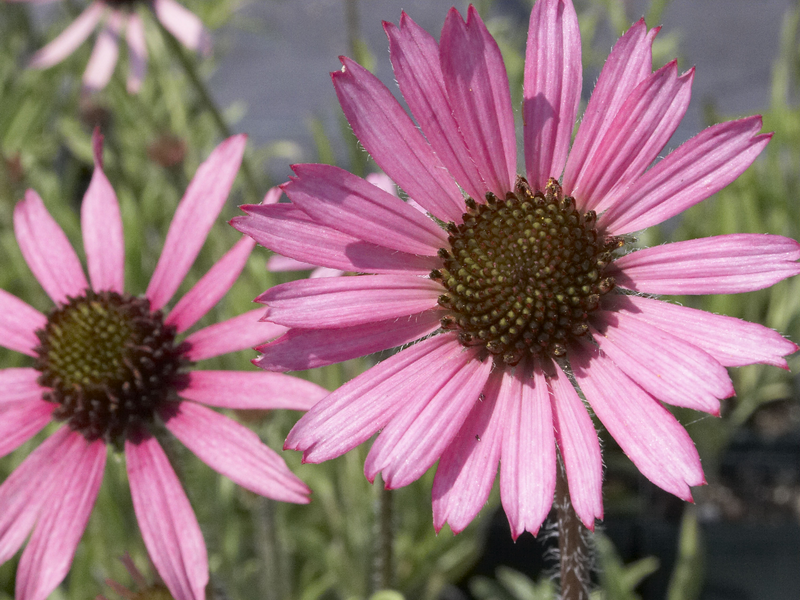Tennessee Coneflower
Echinacea tennesseensis
Click here to download a PDF of this plant information page (for printing).

Sun Exposure: Sun, Part Sun
Season of Interest: Summer, Fall
Bloom Time: June - September
Bloom Color: Lavender to Purple
Height: 2 to 40 in.
Spread: 24 in.
Spacing: 28 in.
Water Needs: Drought tolerant
Maintenance: Deadhead
Soil Type: Clay, Rocky
Soil pH: Acidic, Neutral
Soil Drainage: Well drained
Pests: Deer and Rabbit resistant
Diseases: Leaf spot, Aster yellows
Wildlife: Bees, Butterflies, Birds

Description:
The Tennessee purple coneflower is a true Tennessee treasure. It was first discovered by botanists in 1878 within the cedar glades of the Central Basin of Tennessee and it is found nowhere else. Its rarity is due in part to the unique conditions from which it naturally evolved. Cedar glades are characterized by limestone outcroppings and extremely shallow soils that are often less than an inch deep. By the mid twentieth century, few traces of this endemic species remained. In 1979 it was the first plant from Tennessee to be placed on the Federal List of Endangered and Threatened Plants. In 2011, after thirty years of had work, it was officially delisted from the federal list.
This beautiful Echinacea species is unique in its appearance, as its ray-like flowers have petals that tend to stand upright, making it easy to identify among other coneflowers. In the garden, this plant will typically grow to around two to three feet in height, blooms heavily from June until September in much of the state, and prefers full sun. It does best when planted in well-drained soil. Plant them in the spot of your garden with the poorest soil, and you will be rewarded for it! They require little care in the garden due to their superb drought tolerance, and they are virtually pest-free. For more information see:
plants.ces.ncsu.edu/plants/echinacea-tennesseensis
Care and Growing Tips:
To get the most blooms (and the sturdiest plants), plant your coneflowers in a spot that gets at least six to eight hours of full sunlight each day. The plants will tolerate partial shade, but may eventually flop over, and the blooms won't be as prolific. Coneflowers grow best in a garden that with a neutral soil pH. They can thrive in a variety of soil types, including sandy, rocky, and clay soils. However, they do not like wet or mucky soil. For best results, add a bit of compost to your mixture when planting to give your coneflowers successful a good start. Water them daily just after planting, As a native plant, Tennessee coneflower thrives in hot, dry climates but can handle a range of temperature and humidity fluctuations. Adding compost each spring usually gives them the nutrition they need for healthy foliage and blooms. Pruning coneflowers is helpful, but not necessary. You can leave the plants standing throughout the winter months to feed the birds. That being said, deadheading is the primary maintenance for coneflowers and will keep them in bloom all summer.